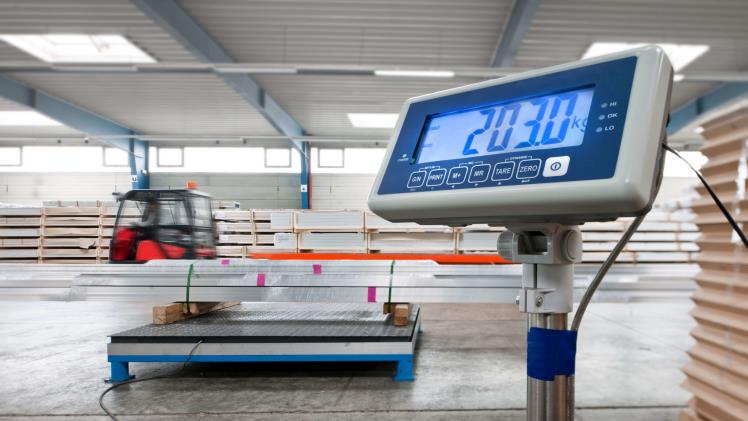Industrial weighing devices have long been the unsung heroes of various industries, quietly performing the crucial task of measuring and monitoring weights. These robust devices are not just about numbers on display; they represent a complex interplay of technologies and engineering marvels that ensure precision and accuracy in every measurement. This article delves into science behind the industrial weighing scale, shedding light on their key components and their critical role in modern industrial processes.
Load Cells: The Silent Sensors
The load cell is at the heart of every industrial weighing scale – a sophisticated sensor that converts mechanical force into electrical signals. These sensors come in various types, including strain gauge, hydraulic, and capacitive load cells, each designed to suit specific applications.
Strain Gauge Load Cells: These are the most common type of load cells and operate on the principle of resistance change when subjected to mechanical stress. As the load on the scale platform increases or decreases, the strain gauges within the load cell experience slight deformations, altering their resistance. This change in resistance is then converted into an electrical signal corresponding to the weight placed on the scale.
Hydraulic Load Cells: In situations where extreme precision and durability are required, hydraulic load cells come into play. They employ a hydraulic fluid system to measure weight. When force is applied to the scale, it compresses the hydraulic fluid, causing a change in pressure that is translated into an electrical signal.
Capacitive Load Cells: Capacitive load cells use variations in capacitance to determine weight. These load cells have two plates, one fixed and one movable. The distance between the plates changes as weight is applied, altering their capacitance. This change is then converted into a weight measurement.
Digital vs. Analog Weighing Scales
These weighing scales come in two main types: digital and analog. Each type has strengths and weaknesses, making them suitable for different scenarios.
Digital Weighing Scales: These scales have gained popularity due to their high precision and ease of use. They are equipped with digital displays that provide accurate readings, often down to the gram. Digital scales also offer features such as data logging and connectivity options for integration into computer systems, making them ideal for industries requiring extensive record-keeping and automation.
Analog Weighing Scales: Analog scales, on the other hand, utilize mechanical components like springs and dials to indicate weight. While they may lack the precision of digital scales, they are known for their robustness and durability. Analog scales are commonly used in environments where electronic components may be vulnerable to damage, such as industrial settings with extreme temperatures or heavy vibrations.
Calibration: Ensuring Accuracy
The precision of these weighing scales holds immense significance, for even a minor discrepancy can profoundly impact industrial operations. Calibration emerges as the pivotal process for fine-tuning these scales to align with established standards. This procedure primarily involves the utilization of predefined reference weights to validate and rectify the scale’s precision. The periodicity of calibration assumes paramount importance in upholding the dependability of these weighing scales. Consistent and meticulous calibration routines are indispensable in ensuring that these critical instruments continue to provide accurate measurements essential for the seamless functioning of diverse industrial processes.
Environmental Considerations
These weighing scales are often subjected to harsh environmental conditions, including temperature fluctuations, humidity, and exposure to dust and chemicals. To ensure their longevity and accuracy, these scales are built with materials and coatings that can withstand these challenges. Stainless steel is a common choice due to its corrosion resistance and durability.
Applications Across Industries
These weighing scales find applications in various industries, from manufacturing and logistics to agriculture and healthcare. They are used to weigh raw materials, monitor product quality, measure ingredients in food processing, and ensure compliance with safety regulations in pharmaceutical production. These weighing scales are critical in determining shipping costs and ensuring vehicles are adequately supplied in logistics and shipping.
In the manufacturing sector, these scales are indispensable for quality control, ensuring that products meet precise specifications. In agriculture, they facilitate accurate measurement of bulk produce, aiding in efficient distribution and fair trade. In healthcare, these scales play a pivotal role in patient care, from measuring medications to tracking body weight changes. As industries continue to rely on precision and efficiency, these weighing scales remain essential tools, contributing to the success and safety of diverse industrial processes.
Conclusion
These weighing scales are the unsung heroes of many industries, providing the crucial measurements needed for efficient and safe operations. Their inner workings, including load cells, digital or analog technology, and meticulous calibration processes, ensure the accuracy and reliability of these devices. Moreover, their ability to withstand harsh environmental conditions makes them indispensable tools in a wide array of industrial applications. As industries evolve, so will the science and technology behind these weighing scales, further enhancing their precision and utility.


